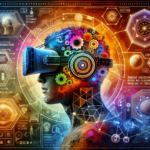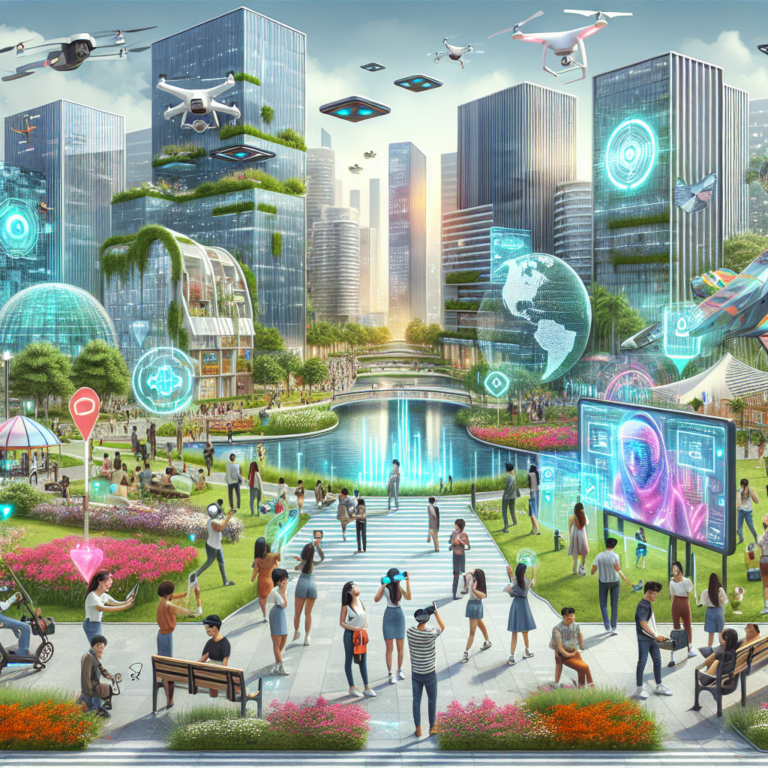Revolutionizing Urban Landscapes: The Fusion of Immersive Technologies and Smart Cities 🌆
The Dawn of Smart Cities
As cities around the globe grapple with rapid urbanization, the demand for innovative and sustainable solutions has never been more critical. Enter the era of smart cities — urban areas that leverage technology to enhance the quality of life for their residents. In this transformational landscape, immersive technologies are paving the way for visionary urban planning, making our cities not just smarter but also more engaging and user-friendly.
Understanding Immersive Technologies
Immersive technologies encompass a variety of digital tools that blend the physical and virtual realms. They include:
- Virtual Reality (VR): An artificial environment created using computer hardware and software, allowing users to experience and interact with 3D spaces.
- Augmented Reality (AR): A technology that overlays digital information, such as images or annotations, onto the real world.
- Mixed Reality (MR): A combination of both VR and AR, merging real and virtual elements to create immersive experiences.
These technologies are capturing the imagination of architects, planners, and public officials alike, offering groundbreaking ways to visualize and shape our urban environments.
Enhancing Urban Planning with Immersive Technologies
Traditionally, urban planners relied on 2D maps and static models to present their ideas. However, immersive technologies offer a dynamic alternative! Here’s how they are reshaping urban planning:
1. Visualization of Concepts
Immersive technologies empower planners to create realistic 3D models of proposed urban projects. This allows stakeholders to:
- Walk through proposed developments in real time.
- Visualize the impact of design decisions on the surrounding environment.
- Identify potential issues before they arise, ensuring better-informed decisions.
By using VR, planners can provide an immersive experience to the community, allowing residents to explore proposed changes first-hand and provide valuable feedback.
2. Community Engagement and Feedback
Engaging the community in the planning process is crucial for successful urban development. Immersive technologies facilitate this by:
- Creating interactive platforms where citizens can immerse themselves in new urban designs.
- Utilizing AR to project potential changes onto existing urban landscapes for better context.
- Encouraging participation through gamified experiences that make feedback collection fun and informative.
This process fosters a sense of ownership among residents and helps planners better grasp community desires.
3. Simulation of Urban Scenarios
Simulating various urban scenarios is another strong suit of immersive technologies. By modeling different variables, such as:
- Traffic flow
- Environmental impact
- Public safety measures
Urban planners can understand how proposed changes might affect the overall functioning of a city. This predictive capability offers a vital advantage in crafting policies that promote long-term sustainability.
Case Studies: Immersive Technologies in Action
Let’s take a look at some exciting instances where cities have successfully integrated immersive technologies into their urban planning processes:
1. Singapore’s Virtual Deep Dive
Singapore has embraced immersive technology to create a virtual version of its city-state. Using VR simulations, planners can visualize urban challenges such as traffic congestion and evaluate infrastructure needs. This approach facilitates informed decision-making, contributing to Singapore’s reputation as a global leader in smart city initiatives. 🚀
2. Sydney’s Interactive City Planning
Sydney is transforming urban planning with AR applications. Residents can view new developments as they would appear in their neighborhoods through their devices. This innovative approach allows locals to see the potential changes and contribute their perspectives—effectively integrating the community into the planning process.
3. Barcelona’s Citizen-Centric Approaches
Barcelona utilizes immersive technologies to engage citizens in the planning of parks, transport systems, and public amenities. The city’s initiative includes VR workshops where residents can explore and interact with planned spaces, ensuring that community needs and aspirations shape development.
The Future of Urban Planning
As we embark on a new era of urban design, the integration of immersive technologies in smart cities offers transformative possibilities. By harnessing these tools, cities can:
- Create more inclusive and participatory planning processes.
- Enhance visualization for better communication of planning initiatives.
- Utilize simulations to anticipate challenges and optimize solutions.
The future of urban planning lies in collaboration, creativity, and an unwavering commitment to making cities not just smarter, but also more vibrant, sustainable spaces for everyone.
Key Takeaways: Immersive Technologies and Smart Cities
Immersive technologies are leading the charge in revolutionizing urban planning. As we look ahead, it’s essential to:
- Embrace innovative tech solutions for more engaging citizen participation.
- Invest in training and education to keep urban planners ahead of the curve.
- Prioritize sustainability and adaptability in every planning decision.
This exciting fusion of technology and urban planning heralds a bright future for smart cities, fostering vibrant, inclusive, and resilient urban environments for generations to come! 🌍✨




0 Comments